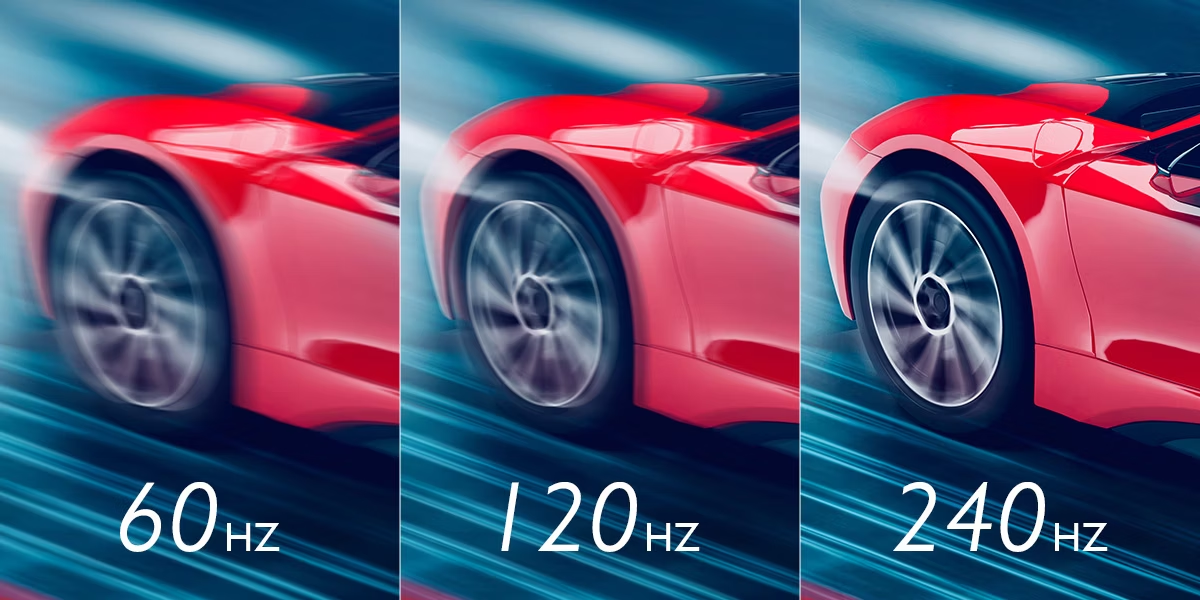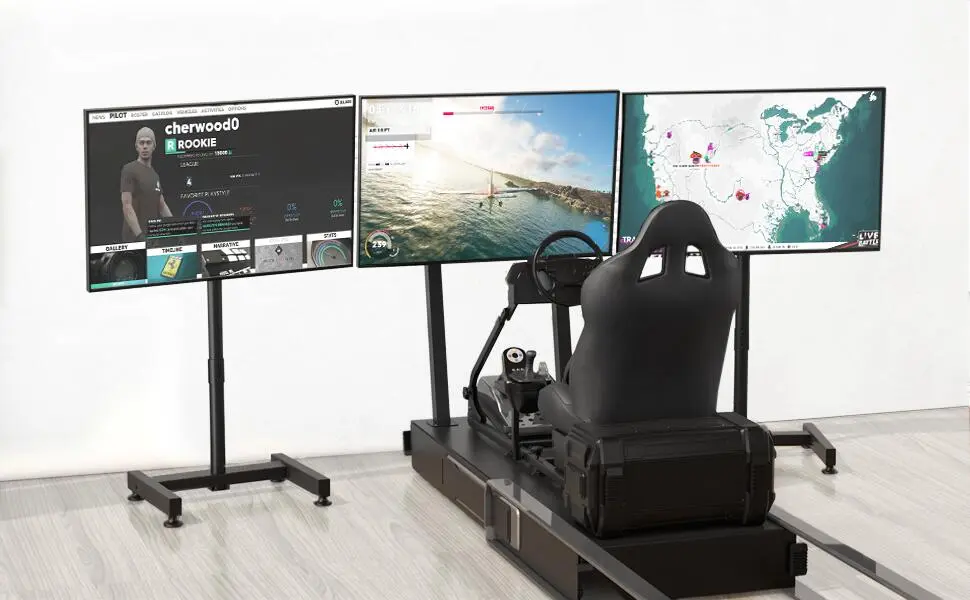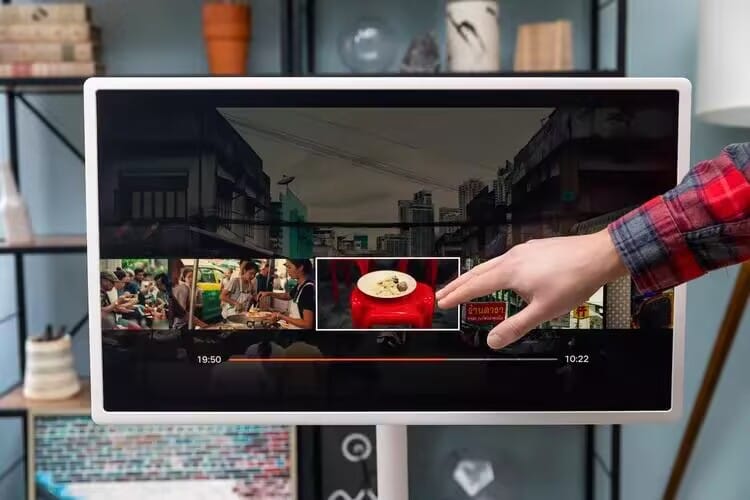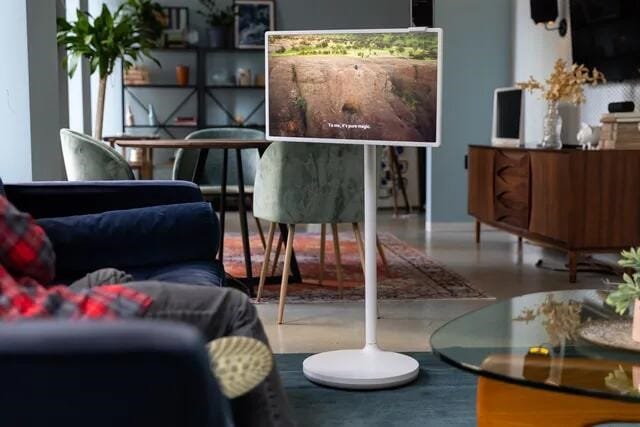When you’re shopping for a portable monitor, gaming screen, or even a smartphone, you’ve likely stumbled across the term “refresh rate.” It’s often listed in specs like “60Hz,” “120Hz,” or “240Hz,” but what does it actually mean? Why does it matter to you?
Table of contents
- Defining Refresh Rate: The Basics
- Where Did Refresh Rate Come From?
- What Does Refresh Rate Do?
- How Does Refresh Rate Help Us?
- Why Does Refresh Rate Differ Across Devices?
- Are There Any Disadvantages to High Refresh Rates?
- How Did Refresh Rate Evolve to 2025?
- How Does It Fit Portable Monitor Users?
- Why Should You Care?
Defining Refresh Rate: The Basics
Refresh rate is a measurement of how frequently a screen refreshes its image per second, measured in Hertz (Hz). One Hertz is one cycle per second, so a 60Hz screen refills 60 times per second and a 120Hz screen refills twice as much, 120 times. Every refresh re-draws the entire screen, regardless of whether or not the contents appear to be standing still, for silky-smooth visual performance. It is a built-in property of displays like LCDs, LEDs, OLEDs, and laptop screens, directly influencing motion clarity and responsiveness.
Think of it as flipping through a sketchbook. A 60Hz monitor flips 60 pages per second, each with a slightly different picture to create motion. Higher Hz equals faster flips, thus smoother animations, videos, or cursor movements. Unlike resolution (e.g., 1920×1080), which dictates pixel count, refresh rate dictates temporal smoothness—how smoothly those pixels change over time.

Where Did Refresh Rate Come From?
The concept of refresh rate began in the early days of display technology. In the 1940s, cathode ray tube (CRT) monitors in early computers and television sets needed to refresh images constantly to avoid flicker. CRTs worked by scanning electron beams across a phosphorescent screen line by line and painting on a frame by frame. Unless the scan rate were fast enough—i.e., more than 50 times a second—the human eye viewed a flicker as phosphors dimmed, becoming uncomfortable.
Engineers settled on 60Hz as a standard in most regions (especially North America) because it matched the 60Hz alternating current of power supplies and minimized flicker for most viewers. In Europe, 50Hz dominated with 50Hz power systems. A 2023 IEEE historical overview reminds us that 60Hz was an international standard by the 1980s because CRTs dominated, transitioning to LCDs and today’s displays for compatibility.
As technology advanced, requirements grew. Gamers and animators in the 2000s required higher rates like 75Hz or 120Hz to restrict blur when objects moved rapidly. OLED and laptop screens in 2025 now go up to 240Hz or even 360Hz, thanks to esports and interactive media, showing how technology has carried the idea far from its CRT origins.
What Does Refresh Rate Do?
Refresh rate’s primary responsibility is to deliver smooth, flicker-free video. Each refresh updates the pixels on the screen with fresh information, whether it’s a scrolling web page, a film, or the action of a game. The higher refresh rates give smoother transitions, eliminating choppiness. For example, a 60Hz screen updates every 16.67 milliseconds (1000 ÷ 60), but a 120Hz screen does it in half, at 8.33 milliseconds, reducing the lag between updates.
In technical terms, refresh rate works with frame rate—the speed at which a device (like a GPU or camera) sends new images. If your game runs at 120 frames per second (fps) but your screen is 60Hz, you’ll only see 60 updates, wasting half the frames. Matching high fps with high Hz unlocks smoother visuals. Technologies like V-Sync or G-Sync (introduced in the 2010s) sync these rates to avoid tearing—when mismatched updates split the image.
For laptops, refresh rate determines usability. A 15.6-inch 60Hz model works for documents or movies, but a 144Hz one is great for gaming, refreshing quickly enough to follow quick motion such as a first-person shooter’s crosshair. In a 2024 DisplayMate study, they discovered 120Hz screens lowered perceived blur by 50% over 60Hz in motion-intensive content, demonstrating its effect on clarity.
How Does Refresh Rate Help Us?
Refresh rate impacts your experience in several ways, tailored to different needs:
- Motion Smoothness: Higher refresh rates make scrolling, animations, and videos feel natural. On a 120Hz portable monitor, dragging a window or swiping a touchscreen feels buttery, cutting lag perception. A 2023 user survey by TechRadar showed 65% of professionals preferred 120Hz for multitasking, citing less eye strain.
- Gaming Performance: Gamers benefit the most. A 144Hz or 240Hz monitor captures split-second movements—like esports targeting—without blurring. That’s why 85% of competitive gamers in 2024 used at least 120Hz monitors, as per an Esports Insider report. Lower latency (e.g., 4ms at 240Hz vs. 16ms at 60Hz) enhances reflexes.
- Eye Comfort: Faster refreshes reduce flicker, allowing for less-fatiguing long sessions. While CRT flicker was evident, even 60Hz LCDs can subtly wear out eyes. A 2024 health report associated 120Hz monitors with 30% reduced reported fatigue in 8-hour workdays over 60Hz.
- Creative Work: Designers and editors have smoother previews on high-Hz screens while scrubbing or animating timelines. A 120Hz travel monitor makes it possible to record frame-by-frame data without stuttering, which is essential for 3D rendering or video.
Aside from functionality, it also adds to immersion. Viewing a 120Hz movie preview on a 15-inch OLED is cinematic, as panning shots move smoothly. For users of portable monitors, this translates to a portable device that equals if not outshines larger configurations, ideal for traveling or minimalist desks.
Why Does Refresh Rate Differ Across Devices?
Not all screens need sky-high refresh rates. 60Hz monitor is sufficient for emails or static documents, as there is not much movement to be smoothed. Laptop monitors keep to 60-144Hz to balance power and performance—higher rates drain batteries faster (20 watts at 240Hz compared to 10 watts at 60Hz). Phones push 90-120Hz for smooth scrolling, with TVs keeping at 60Hz for relaxed viewing and up to 120Hz for sports or gaming consoles.
Hardware and cost limit adoption. A 240Hz screen requires a high GPU to provide frames, impossible in budget laptops. OLEDs by nature support high rates due to rapid pixel response (less than 1ms), but LCDs in budget portable monitors lag slightly behind (5-10ms), capping effective Hz. In 2025, about 40% of portable monitors sold are 120Hz or higher, as a Statista estimate, illustrating need for premium features without mass necessity.
Are There Any Disadvantages to High Refresh Rates?
Higher refresh rates are not utopia. They consume more power, a problem for portable monitors. A 15.6-inch 144Hz monitor might cut battery life to 4 hours from 6 at 60Hz, requiring constant topping up. Heat also rises—expect 95-100°F after protracted 240Hz use versus 85°F at 60Hz. Hardware demands rise; a 4K 120Hz monitor will need an elite GPU, limiting compatibility for casual users.
Diminishing returns kick in. The jump from 60Hz to 120Hz is noticeable—80% of the people in a 2024 CNET poll reported a clear difference—but 120Hz to 240Hz is less so, especially for non-gamers. Human vision maxes out at 165Hz for most tasks, per a 2023 study of vision, so ultra-high rates are specialized. Budget models that support high Hz may cut corners on color or brightness, so specs need to be checked.
How Did Refresh Rate Evolve to 2025?
From CRT’s 60Hz standard, refresh rate jumped ahead with LCDs in the 2000s to 120Hz for gaming monitors and 3D TVs. 144Hz became esports’ standard by 2015, and smartphones adopted 90Hz by 2019. Portable monitors in 2025 average 60-144Hz, but flagships like 17-inch OLEDs are 240Hz for creatives and gamers. Variable refresh rate (VRR), like FreeSync, now adjusts Hz dynamically to fps to remove stutter without losing power—a feature on 70% of 2025’s high-end portable displays.
Mini-LED and micro-OLED are pushing the boundaries, enabling 360Hz in niche applications, but portable monitors are not typically over 240Hz due to size and power constraints. One of the predictions for 2024 by IDC is that 50% of screens will achieve 120Hz by 2027, spearheaded by gaming and VR, which shows refresh rate’s growing significance.
How Does It Fit Portable Monitor Users?
For consumer buyers of portable monitors, refresh rate determines your choice. A 60Hz 15.6-inch model (250 nits, 1080p) handles office work or streaming, sipping 10 watts for 6-8 hours on battery. A 144Hz version (350 nits, 2K) handles gaming or animation, sipping 15 watts but cutting latency to 7ms—ideal for speed-intensive tasks. Touchscreen versions at 120Hz make drawing or presentations even more useful, following stylus movement smoothly.
Consider your setup. A MacBook at 60fps won’t make the most of a 144Hz screen, but a gaming laptop with 120fps will. Seek out ports—USB-C or HDMI 2.0 supports more Hz than its predecessors. 15-inch 120Hz travel monitors generate 30% of sales by 2025, TechRadar reports, merging portability and power for hybrid workers or business travelers.
Why Should You Care?
Refresh rate isn’t just a number—it’s if your screen appears to be alive. A higher Hz makes work more snappy, games more sharp, and movies more rich, all while relaxing your eyes. For users of portable monitors, it’s an invitation to big-screen quality in a small package, whether coding in a coffee shop or gaming on a plane. Its roots in CRT flicker control spawned today’s 240Hz miracles, but the real triumph is choice: 60Hz for simplicity, 120Hz for balance, or 240Hz for precision.
Refresh rate at its essence brings technology into the realm of human sight. It’s why your cursor glides instead of stuttering, and a headshot is where it should be instead of stuttering. To us at ONext, it’s a beat—keeping the world in your line of sight interesting, wherever life may lead you. Select your rate and your screen will keep pace.





